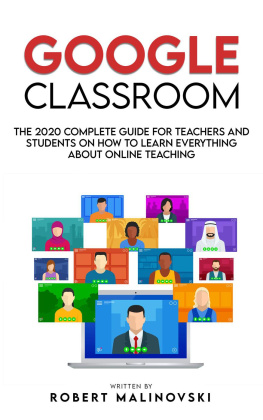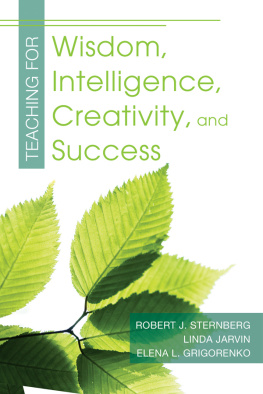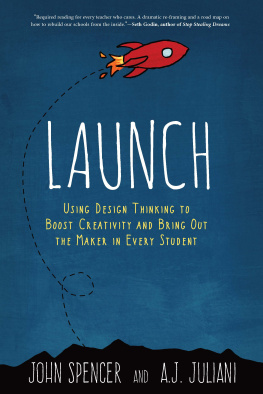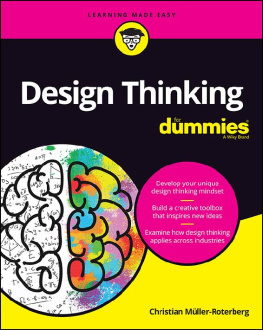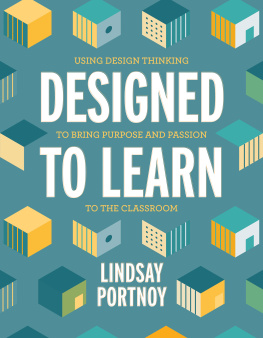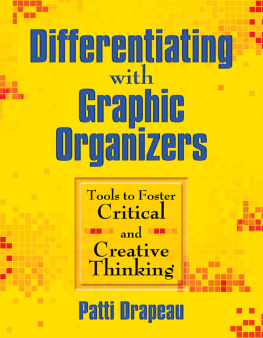Table of Contents
Guide
First and foremost, I would like to state that everything that was included in this book would not have been possible without the inspirational DT work of IDEO, K12 Lab Network, and the d.school. Their open educational resources inspired me to use DT to bring transformational change to my school and empower my students through the implementation of DT into the classroom. I would also like to thank the specific individuals from these amazing organizations from whom Ive learned greatly through their work: David Kelley, Tim Brown, and David Clifford.
For the book itself, I would like to thank Bridget Thoreson for approaching me to write this book and facilitating the whole process from the beginning to the end, and the editors at Ulysses Press, Shayna Keyles and Renee Rutledge, who skillfully helped edit and craft my book to what it is today. In addition, I am so grateful for the following people who were kind enough to take their time to review my drafts, share their expertise, and provide valuable feedback that greatly improved my book: Graham Willard, Sarah Marslender, David Clifford, Stacy Stephens, and Angela Spitzman.
Many of the DT projects in the book could not have happened without the collaboration of numerous teachers and administrators. I would like to thank the following people for taking the time to develop meaningful projects for our students:
Co-Design Teachers: Becca Goess and Heidi Peterson
Science Specialists: Elizabeth DiRenzo, Gene MacLachlan, and Jeremy Jacobsen
Administrators: Danielle Rich, Travis Peterson, and Tara Verenna
Kindergarten teachers: Paul Duffy and Jessica Jacobsen
First-grade teachers: Helen Nam, Erna Lemmon, Amy Cabaluna, Katie Thomas
Second-grade teachers: Denise Brohm, Alice Ahn, Virginia Nakauchi, Leann Norton, and Thomas Cabaluna
Third-grade teachers: Jon Barry, Sally Merriman, Sarah Donaldson, and Katie Fleetwood
Fourth-grade teachers: Angela Spitzman, Molly Ball, Colleen McCabe, and Shikha Kuckreja
Fifth-grade teachers: Jay Keshaw, Stephanie Cory, David Archer, and Erin Curtiss
Specialists: Megan Godek, Megan Greene, Karen Luu, Diana Caudill, Chaoran Yao, and Marsha Bycraft
I cannot forget to give a shout out to my wonderful students who amaze me every day with their kindness, intelligence, enthusiasm, and optimism. Most importantly, Id like to thank my wife, Angela, and my son for motivating me to do my best in everything I do.
Like I stated earlier, the development of the Design Thinking Standards (DTS) was heavily influenced by the work and teachings of the d.school and the K12 Lab Network. The structure of these standards replicates the structure of the Next Generation Science Standards. The standards (or performance expectations) are actionable and assessable learning goals that describe what students should be able to do when using the design thinking process.
These standards comprise design practices (skills that students will be able to do), core design ideas (knowledge that students will understand), and design mindsets (set of attitudes essential for effective application of design thinking). The following shows the empathize phases performance expectations (ES) and the practices, core ideas, and the mindsets that the performance expectations consist of. You can find the complete set of standards at https://bit.ly/2q9n16D.
Empathize Phase
Performance Expectations
Students who demonstrate understanding of the empathize phase can:
DTS-ES-1: Observe the behaviors, feelings, and patterns of the user in the context of their lives and design challenge.
DTS-ES-2: Engage with users and/or experts through conversations and interviews that incorporate open-ended questions to dig deeper for stories, feelings, emotion, and what is important to the user.
Practices
Students will be able to
Observe and engage with users, and immerse in the user experience.
Identify the needs and insights of the users.
Core Ideas
Students will understand that
Empathy brings understanding of people, their physical and emotional needs and wants, the things that they do in their lives, and the context of the design challenge.
Engagement with users through interaction and interviews exposes insights that can be utilized to create a more innovative solution.
A beginners mindset maintains an attitude of openness and puts aside biases that can restrict a persons ability to empathize.
Mindsets Practiced
Design Thinking Mindsets
Students will demonstrate a set of attitudes that will help them
Human centered
Gain inspiration and direction from users and respond to human needs by placing the user at the center of all empathy work.
Mindful of Process
Be thoughtful and reflective of the work being done, how the work is being done, and how the work will improve.
Radical Collaboration
Collaborate and create partnerships with people of different disciplines as well as the users to develop innovative ideas and solutions.
Interactive notebooks (IN) are tools that helps students document their learning. With traditional INs, students create charts, drawings, and write notes onto handouts, which they cut out and glue into their notebooks. Digital versions of these interactive notebooks enhance student learning by providing students the opportunity to create and explore ideas through the use of digital technologies.
I created a Design Thinking Digital Interactive Notebook (DTDIN) using Google Slides to help my students document and organize their work as they go through the different phases of the DT process. Google Slides is a presentation tool that allows students to access, create, and edit their work from any device that contains a browser or its dedicated mobile app. Through this tool, students can document their interview/observation notes and fill out an empathy map during the empathize phase, create mind maps and take photos of their sketched ideas in the ideate phase, and capture video of their user testing their prototypes in the test phase. Since Google Slides allows multiple people to collaborate and work on the same presentation, end users, classmates, and teachers can provide comments and feedback in real time.
The DTDIN also includes a table of contents that contains hyperlinks to specific phases, a slide for your DT projects driving question, and slides for different DT activities like Story Share-and-Capture and the 30 Circle Exercise. You can find this resource at https://bit.ly/2EkvJnJ.
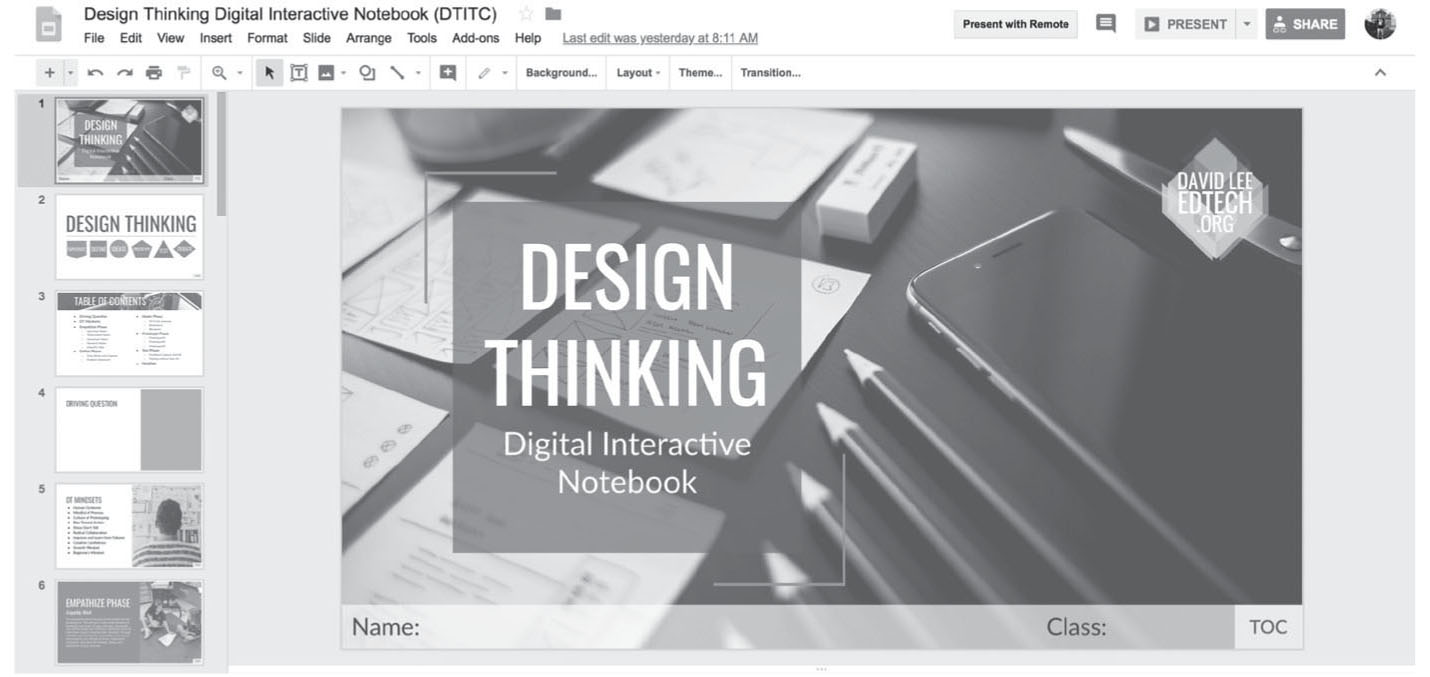
The DTDIN Google Slides presentation gives students the ability to work on their DT project anywhere and on any digital device.
David Lee was the coordinator of the K5 KoLAB Program at Korea International School. He taught Design to K5 students with his coteacher, Heidi Peterson. They taught and modeled the design thinking process and its mindsets so that students can apply what theyve learned in different subject areas to projects where they develop innovative solutions to solve complex problems. David currently teaches at the Singapore American School in Singapore.
ABC Nightline. The Deep Dive: One Companys Secret Weapon for Innovation, YouTube, February 9, 1999, https://www.youtube.com/watch?v=M66ZU2PCIcM.
The Act Project, Defining the ACT Project, May 7, 2017.
Adams, Dallon, The Best of Biomimicry, Digital Trends, January 28, 2017, https://www.digitaltrends.com/cool-tech/biomimicry-examples.
Aedo, Cristian, Jesko Hentschel, Martin Moreno, and Javier Luque, From Occupations to Embedded Skills: A Cross-Country Comparison
Next page



